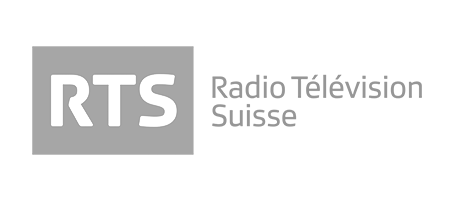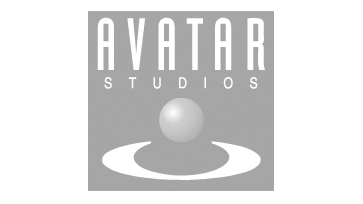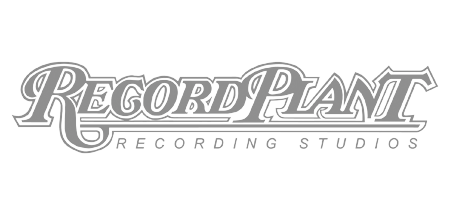10 THINGS TO KNOW ABOUT MASTERING:
READ THIS BEFORE YOU MAKE YOUR FIRST MASTER
Have tons of experience with mixing music? Well, good for you! But have you got what it takes to be a mastering-master? Read this article to find out.
No matter if you’re a Pro Tools prodigy, a Logic legend or a Cubase connoisseur, you can’t skip the mastering part of recording. It’s the equivalent of skipping leg day at the gym!
So if you’re sure you just nailed your mix, it’s time to step up to the mastering plate. The good news is that you already know most of the tools. The bad news is that you can’t necessarily use the tools the way you’re used to. Mastering music is different from mixing.
But fear not. We’re here to take you through some of the most important things you need to know – before and during mastering.

1: Understand the Difference Between Mixing and Mastering
We’re assuming you have a good understanding of the mixing process. But let’s start there anyway. For good measure.
The mixing process is all about making the song/track (in itself) sound great. In other words, mixing focuses on the individual song. Therefore, the arch of the song is way more important than the arch of a series of tracks on an album. In contrast, the mastering process is all about getting the song ready to go out into the world. You might say that mastering deals with the song in context, while mixing deals with the song as an isolated piece of art (at best).
Another way to put it, is that mixing has a micro perspective and mastering has a macro perspective.
On a practical level, here are three important things that you should keep in mind when you reach the final stage of your mixing session and is about to export a stereo file for mastering. They are key to preserving the audio quality of your song from this point on and to mastering, as well as downstream when your audience actually listens to your music.
First, make sure to leave some headroom for the mastering session. Most DAW-meters don’t show True-Peak level, so even when you think you’re below clipping, you may not be. Never hit the 0 dBFS mark -there is plenty of opportunities for reaching that level when you initiate the mastering phase (if that is your goal). To play it safe, simply lower the master fader until you have at least 3 dB headroom towards 0 dBFS.
Secondly, and closely related to the first point in the above, never use a limiter, aggressive compressor or other ‘loudness optimizing’ tools on the Master Bus in your DAW. Again, leave some headroom for the mastering engineer, who may or may not be yourself, and give him or her some dynamics to work with.
Third and lastly, when you export always choose a WAV or AIFF file format in 24-bit resolution. Never apply any data-compression by convertingto e.g. MP3 or AAC-files at this stage.

2: Get A Second Opinion
You know why authors have editors? Because self-editing is hard. Breathing life into a creative product takes a lot of effort, so the author will inadvertently take on a protective attitude. After all, how can you edit your own blood, sweat and tears?
It’s the same with mastering when you made the mix yourself – and especially if you wrote the song as well. You’ve spent so much time perfecting the mix and now you’re going to change the dynamics and overall frequency spectrum? It can be tough. And just like writers rarely catch their own typos, mixing engineers won’t necessarily catch minor imperfections in the mix.
So what are we saying? In an ideal world, you’ll hire someone to do the master for you? Someone with a fresh approach and no biases? Well, that might be a good idea, but if you’re like most home studio owners out there, you’d rather do it yourself. We totally respect that, which is why we made this mastering guide.
The upside to mastering your own tracks is that it can save you a lot of money. You also get more creative control in the process. And, hey, you might just learn something! When taking the leap-of-faith into the mastering world, you must remember to think about the song in a macro perspective. How will the listener experience your work?
Therefore, we strongly recommend that you get second opinions on your mix – a fresh set of ears or even several fresh sets of ears. And listen to whatever input you get from ‘outside listeners’.

3: Acknowledge That Mastering Is a Separate Process
As described in the first point, there are plenty of differences between mixing and mastering, so embrace the fact that mastering is a completely separate process altogether.
Get used to the thought that you need to take on a separate mindset when you have exported your mix and open the mastering session. And think of the tools that you use as being separate, even though there may be similarities – because using e.g. compression and EQ in mastering is different from using those fundamentally same tools when mixing. Why? Simply because the very objective is separate as well.
And what is that objective then? In a single word: Balance. You aim for balancing the overall sound of your song in terms of frequency spectrum, dynamics, stereo image, and overall loudness simultaneously.
With that overall objective in mind, you may also turn to your favorite reference tracks for help. Your reference tracks should be an elaborate list of songs that you know well and consider to be well mastered and preferably within the same music genre. It may be that you already had such reference tracks in mind when writing and recording your songs. While you create your master, go back and forth between your reference tracks and your own track. Keep an open mind and listen to the differences in dynamics, loudness and spectrum. Aspects like ‘clarity’, ‘air’ and ‘punchiness’ live here.
We’re not saying that you should replicate for instance the dynamic feel of a preexisting song, but it’s important to get a grasp of how your track fits into the context of other tracks.

4: Understand What You can Tweak When Mastering
Mastering is your last chance to finetune your song, before it goes into the world. And there are quite a few parameters that you can adjust to give it that final sheen and hit-like expression.
- Finetune the overall ‘tone’ of the track by applying soft EQ-shelves
- Balance the dynamics throughout the song
- Make surgical adjustments to individual problematic dynamic peaks
- Make surgical adjustments to individual peaks at certain frequencies
- Create a wider or narrower stereo image
- Perhaps add a bit of reverberation for a sense of space
- Adjust the overall loudness of your song (but be cautious – more on that below)
- Reduce hisses or sharp consonants
- Get rid of unintended noise (such as that darn 60 cycle hum)
- Limit or enhance the presence of certain instruments

5: Never Go Over 0 dBFS or 0 dBTP
In the first ‘thing to know’, we said the mix should never get too close to 0 dBFS, but what is that anyway? You probably know what dB stands for – decibel. And FS is just an abbreviation of full scale. So what does 0 decibel full scale mean? Well, it’s simply a way to indicate the loudest digital level possible for a WAV file. Most CDs are mixed and mastered to reach approximately 0 dBFS in order to use the full dynamic range of the medium.
Perhaps you find it a little counter-intuitive to use negative values for decibels? You can think of 0 dBFS as a ceiling for the signal level. Any value below this digital ceiling gets negative value that indicates how many dBs it’s away from reaching the maximum level.
In many digital audio workstations (DAWs) you can go beyond 0dBFS. But as already-mentioned, you really shouldn’t. You see, when you export the audio file, all waveform-tips above 0 dBFS will be cut down with ferocious precision. And unless you’re mastering a track consisting entirely of Fuzz-guitars and square-wave Moog-synth, you’re going to notice that.
But wait there’s more! Never getting into the 0 dBFS territory is for the mixing engineer to be aware of, but there is another measure – dBTP. TP stands for True Peak, which are intersample peaks that ‘regular’ DAW meters won’t take into consideration. Therefore, it a True-Peak Meter – or a Loudness Meter with True-Peak indicator – is crucial to have for the mastering engineer.
If you go above 0 dBTP, your track will suffer all the way downstream – conversion, encoding and streaming. It will all end up sounding worse for the listener. So, in order to make sure that this will never happen, you should consider using a True-Peak Brickwall Limiter. If you use that and confirm with your eyes on a True-Peak meter, you should be safe.
Finally, you should also note that currently most of the major streaming services actually recommend -1 dBTP as the goal with regard to True Peak, as well as -16 LUFS as the loudness target.

6: Create an Optimal Listening Environment
OK, put your headphones down… You can’t master a track properly on headphones only, even if you may be used to mixing with them. It is fine to verify how your master will sound on headphones as that is a very real playback scenario that many of your listeners will choose, but don’t rely entirely on headphones when mastering.
You need a decent pair of reference speakers – preferably a pair of really good reference studio monitors, but even a budget pair is most likely a better solution that hooking up your computer to the living room stereo. Also, make sure to place the speakers so you’re sitting in the sweet-spot. Ideally, the tweeters of the studio monitors and your ears should form an equilateral triangle, meaning that the distance between each of the tweeters should be the same as the distance from each of the tweeters to your left and right ear respectively.
You should also decide on a reference listening level. This means that you find a certain Sound Pressure Level (SPL) in your listening position and then you keep it there at all times – or be aware if you deviate from it. How loud you want your reference level is individual and it is not uncommon to see mastering engineers preferring a reference SPL anywhere from 72 dB to 88 dB SPL. Find a level that suits your room and ears – and stick with it. The reason why this is so important is that if you ride the volume knob all the time, you will make different mastering decisions based on the current SPL, so always keep it consistent. But note that the higher the SPL, the higher the chances for suffering from listening fatigue during long sessions. Alternatively, when listening at very quiet levels, your ears are not as sensitive to especially low frequencies.
To tune your ears to the room and the speakers, you have to listen to a lot of different songs from different genres. Notice the subtleties in the music and think about how they relate to the specific way the songs were mastered. Perhaps you want to go in-depth with a lot of tracks by the same mastering engineer? Listen for similarities. Is there a sonic signature? The longer you listen, the more you train your ears to the environment.
Some professional mastering engineers train or ‘calibrate’ their ears every day before opening the first session. You could do that by listening to well-known reference tracks and listen for tiny details that you know is there – but that you may need to listen hard for to recognize.

7: Consider Your Room Acoustics
Simply put, there are three things that determine the quality of your listening environment:
- The room (and your position in it)
- The speakers and their EQ’ing… (and their placement in relation to you and the room)
- How tuned your ears are to the room and the speakers
Ideally, you’re mastering in a room with appropriate absorption/diffusion panels on the walls and bass traps in the corners. But you can get by with less. Rugs, bookshelves and armchairs are great budget-solutions that can help removing some of the unwanted reverberation and coloration. Note that especially the low-end frequencies can be problematic if your room is small and that ‘standing waves’ may be present if your room has unfortunate dimensions. If the level of certain bass frequencies seem to change a lot, when you move around a little in the room, the latter may be the issue.
But again, for instance soft furniture can help you turn the room into a better listening environment. It would be natural to think that you need to apply absorption panels or diffusers on the wall – and this may well be a good idea – but a couch in the middle of the room also makes a drastic change to your room’s acoustics. If you have no way to accurately measure – or the budget to treat it acoustically to perfection, try moving around some of the furniture and listen closely to the difference it makes.
Now, a good reference studio monitor should reproduce audio in a fairly linear way. But even if it is measured to deliver linear audio in an anechoic measurement chamber, it may sound quite different in another room/environment. This is perfectly common and is exactly why most studio speakers offer some sort of equalization, e.g. switches on the back. Ideally, you use a measurement microphone and software to calibrate your monitors to your room specifically, in several positions. But even if you can’t do that, use reference tracks that you know extremely well, and for instance, if one of these sounds bass-heavy, make sure this is also the case on your studio monitors. If you compensate a bass-heavy track to sound more ‘linear’, it will affect all of your future mixing and mastering work accordingly. It is equivalent to compensate by removing too much blue in an image that is viewed on a screen, which is calibrated to show too much blue.
Long-term TC Electronic user and legendary mastering engineer, Bob Katz, once shared with us that in his view, the only way to make a song sound great on a wide range of un-calibrated playback systems is to have a carefully calibrated mastering speaker system – and then stick with it. If you listen to several un-calibrated systems during mastering, you are forced to compromise between conflicting decisions all along the process. But note that you should calibrate as precisely as possible, while also taking into account your own list of reference tracks – these tracks that you know extremely well should always sound good to YOU in YOUR room. If you achieve that, you will have a monitoring system that you can trust in your particular environment.

8: Create A Reference Library
How loud should your track be? What’s the optimal energy-distribution between highs, mids and lows? How should the dynamics of your song ‘feel’? To answer these and many more questions, you should create your own library of reference tracks. Add only songs that you know intimately – that you have listened to hundreds of times on all kinds of playback systems – and that you like the fundamental sound of. Songs that you see as ‘ideal’ and that you would like your own track to sound like.
If you work in several different genres – e.g. pop, rock, blues, jazz, etc. – create a small library for each music genre that you cover. And when you work on, say, a rock track, use your reference tracks from this part of your library for comparison.
So, what should you listen for – and compare? Spectral balance across the range of frequencies to tune in on the songs overall ‘tone’, but also listen closely for the overall dynamics, determining the ‘distance’ between the loudest and softest parts throughout the song. Finally, you should also listen for the overall loudness of your own song compared to the reference(s), and when zooming all the way out, pay attention to the fundamental ‘feel’ and expression of your song in comparison with your reference library.
Generally, you should check with your reference library as often as possible. It’s one of the most valuable tools you have as you’re building experience as a mastering engineer.

9: Beware of The Loudness Wars
An important note on loudness is that there has been a trend in mastering toward making songs appear louder and louder. Since you can never exceed the 0dBFS digital ceiling, applying a brickwall Limiter at the final stage, the result often has been to apply very aggressive settings on dynamics tools such as multiband compressors, so-called ‘loudness optimizers’, as well as the final Brickwall Limiter itself.
This phenomenon has been referred to as ‘The Loudness Wars’. It all escalated, as it is well known that we naturally perceive a louder version of a song to be better than a softer version when you compare them directly. Another cause is that record industry people would compare an ‘airplay’ version of one track to a newly mastered CD track, where the former tended to sound louder and fatter due to FM broadcast processing – leading to a request to make the master louder. Well, the ‘wars’ may have peaked, but it is still something that you should be aware of and pay attention to. And while we say that they may have peaked, they are not completely over…
But please note that we recommend not to hyper-compress and limiting your tracks to the extreme in the mastering process! If you overdo it, it will reduce the audio quality of your work.
Further, if you apply extreme amounts of compression, distortion occurs, which may lead to listening fatigue for you as well as your audience. Of course, the amount of compression that you can use in order to fit a certain music genre can vary, but just stay aware of how it affects your music and act accordingly.
It is also very important that you always listen to your own mastering project and your reference library at the same loudness level when you compare them. There is no doubt that while a heavily compressed song – dynamically speaking – may sound more impactful at first, you will sacrifice detail and nuance.
Finally, keep in mind that the current trend in music streaming is a target loudness of approximately -16 LUFS (also see tip 5 and 10), so if you deliver a significantly louder song, it will get turned down automatically if the listener chooses to apply the ‘normalization’ feature such as ‘SoundCheck’ or ‘Same Level’ that aligns the loudness of the songs in the library. And if that happens, your very loud song may well end up sounding much less impressive than the competition!

10: Trust Your Ears. But Consult Your Eyes
Metering your audio signal is an important part of mastering. Your ears may not detect the onset of clipping or be able to tell you precisely how much gain you can add before you reach 0 dBFS. Without metering, you may be unaware of when the compressors/limiters kick in or how a certain EQ-shelve affects the overall loudness.
In short: You should always trust your ears – but if you’re not paying attention to what the meters are telling you, you do risk making mistakes. And related to that, to give your ears a fighting chance make sure to take a short break every now and then. But the visual feedback you can get from a loudness meter or spectral analyzer is a great supplement. Most professionals use them, and if you’re relatively new to mastering, it is definitely a crucial tool. (Advanced spectral analysis will be the topic of a future article…)
Loudness
We’ll get into a full description of loudness meters in another article. For now, you have to know about the LUFS metering scale, the three common timescales used in determining loudness and True Peak.
LUFS stands for ‘Loudness Units Full Scale’. The scale doesn’t measure sound as a dB meter or a VU meter would. Rather, it accounts for how the human ear (and brain) perceives the loudness of a track. That’s also why there is only one loudness value or level, instead of one per channel.
There are three standard ways of measuring loudness:
- Momentary loudness (that read 400 ms of signal when determining a value)
- Short-Term loudness (3 seconds of signal)
- Long-Term/Integrated Loudness or Program Loudness (that calculates an overall loudness of the entire song)
Please note that the recommended loudness target of -16 LUFS for most streaming services is
measured as Integrated loudness – across the full duration of the song.
True Peak
Often, there can be small peaks of sound in-between digital samples that go undetected in digital tools. Where traditional peak meters and conventional peak limiters fail to read those true peaks of sound, a True Peak meter will provide the mastering engineer with the actual reading.
Without a True Peak meter and True-Peak Limiter especially, a mastered track could go into digital clipping when converted to a lossy format like MP3 or OGG Vorbis or when being Digital-Analog converted in playback systems. This can happen, even if no distortion is heard when monitoring the final master.
Finally, we recommend that you use a loudness meter in two ways. First, as a real-time measure that shows you what is happening here and now, and secondly, run a integrated loudness measurement once in a while to keep updated on how your recent tweaks affect the overall long-term loudness. Certain mastering tools can help optimize/automate this process (more about that later).
Read more about the topic in this article… [insert link]
https://www.tcelectronic.com/brand/tcelectronic/loudness
Finally, apart from a loudness meter, other important visual-feedback tools include Spectral Analyzers, Mid/Side and gain-reduction meters.
Well, we hope that these 10 things to know about mastering will help you get off to a great start as being your own mastering engineer. Or if you are already there, that you may have discovered one or two new aspects that will help you achieve even better mastering results in the future!














